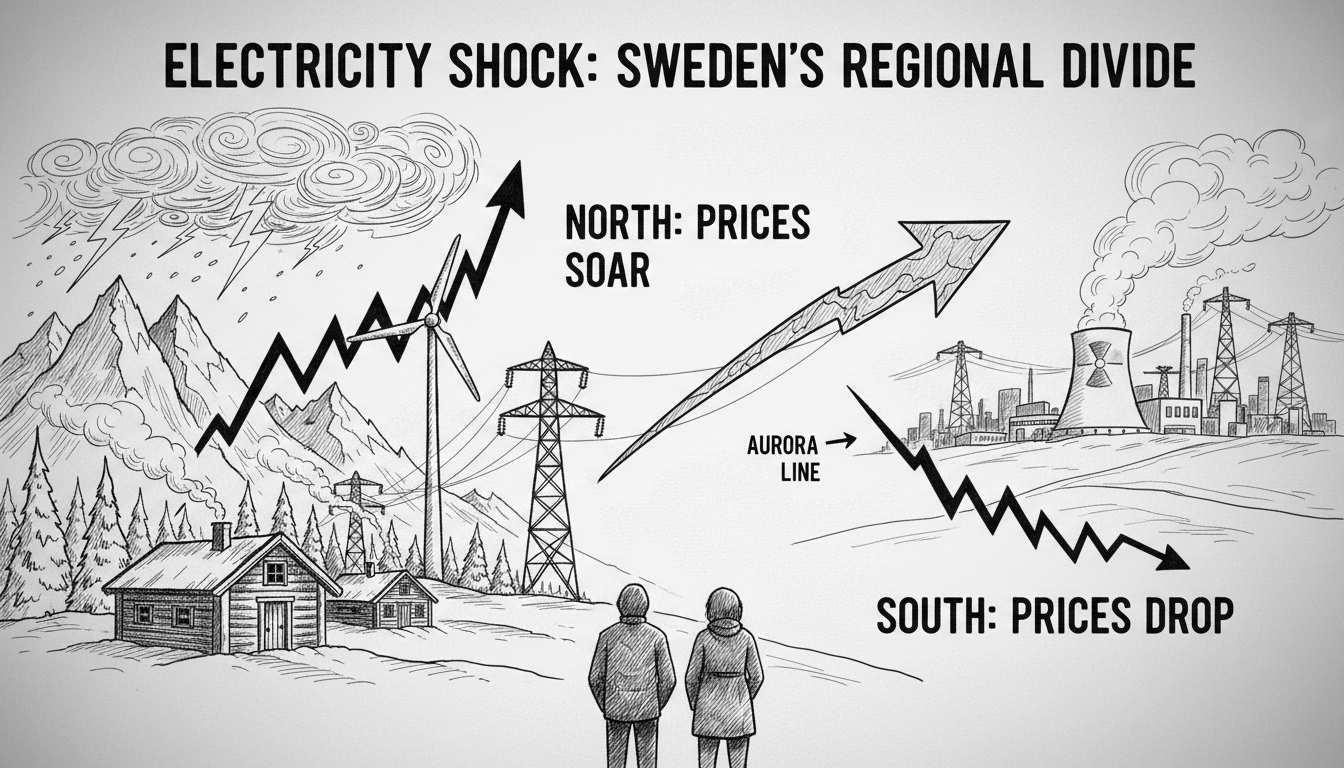Northern Sweden faces a dramatic electricity price surge as winter sets in. The average spot price reached over one Swedish krona per kilowatt-hour in recent days. This marks a sharp increase from October's average of 14.22 öre/kWh in electricity area 1, covering Norrbotten and parts of Västerbotten.
Energy market analyst Magnus Thorstensson addressed concerns about repeating the 2022/2023 electricity price crisis. He stated the current situation differs from previous extreme conditions. Multiple factors contributed to that earlier crisis, creating abnormal market circumstances.
Three primary drivers explain the current price spike in northern Sweden. Cold weather patterns increased heating demand across the region. Ice formation on the Lule River reduced hydroelectric generation capacity. Lower wind power production also contributed to supply constraints.
The new Aurora Line power connection between Sweden and Finland began operations in November. This major infrastructure project increases electricity trading capacity between the countries by over 40 percent. The 2000-megawatt transmission line spans 38 miles between Messaure in Sweden and Pyhänselkä in Finland.
Grid operator officials explain how the new connection affects regional pricing dynamics. Ida Wallentin from the national grid authority described the interconnection's market impact. The line allows more electricity export to Finland, potentially tightening local supply in northern Sweden.
Northern Swedish electricity prices show extreme volatility compared to southern regions. Southern Sweden experiences stable or declining prices while northern areas face spikes. This geographical disparity highlights infrastructure limitations in Sweden's power distribution network.
Energy experts note that Sweden's electricity market operates in multiple price zones. Northern Sweden constitutes zone 1 while southern areas fall into different zones. Transmission bottlenecks between regions create these price differences.
Consumers in northern Sweden express frustration about the sudden cost increases. Many residents remember the previous winter's electricity crisis and fear repeating that experience. The price surge comes during peak heating season when households need electricity most.
The situation demonstrates ongoing challenges in balancing Sweden's energy transition. While the country develops renewable capacity, transmission constraints remain problematic. Northern Sweden generates substantial clean energy but cannot always deliver it to demand centers.
Market analysts suggest the price differential may persist through the winter months. Cold weather typically increases northern electricity demand while limiting some generation capacity. The new cross-border connection provides export opportunities but may exacerbate local supply issues.
Swedish energy policy continues to grapple with regional disparities in electricity costs. The current situation underscores the need for improved grid infrastructure and storage solutions. Consumers face uncertainty as weather-dependent generation meets increasing cross-border trading opportunities.

